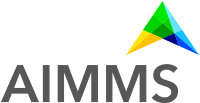Isn’t It Time to Finally Retire Your Supply Chain Spreadsheets?

According to a recent survey, 65% of companies are still using spreadsheets in planning their supply chain process, and while they are familiar, inexpensive, and convenient relying on spreadsheets pose serious setbacks for organizations.
A recent Wall Street Journal article details how finance chiefs are cutting back on Microsoft Excel because it hasn’t “kept up with the demands of contemporary corporate finance units.”
“I don’t want financial planning people spending their time importing and exporting and manipulating data, I want them to focus on what is the data telling us” – Adobe Inc.’s finance chief Mark Garrett tells WSJ journalist Tatyana Shumsky.
This mood prevails among supply chain executives as well.
Spreadsheets still dominate planning in the supply chain.
We recently commissioned Supply Chain Insights to conduct independent research on supply chain network design, and 65% of the companies surveyed are reportedly using spreadsheets to support this process.
Spreadsheets are familiar, inexpensive and convenient. But they pose serious setbacks for organizations:
- They are practically never integrated with other systems
- They are not updated automatically
- The logic behind them is often only clear to those who create them and often dies when somebody leaves, making collaboration difficult
- Analyses are often slow given that you can only work with a certain amount of data
- Version control is hard
What Supply Chain Chiefs Say
Several of our customers have decided to retire their spreadsheets in exchange for more robust and collaboration-friendly solutions. BP, for instance, used to run its business mainly on spreadsheets. But this limited transparency and visibility, as Norm Jerome, the company’s former advisor for Economic Modeling and Supply Chain Optimization recounts:
“Using a collection of spreadsheets (each owned by different people or teams) tends to be rather manual and disconnected so typically it’s quite difficult to figure out the true state of business on any given day because you have to look in so many different places. Replacing those spreadsheets with a central tool allows people to learn a huge amount about what is going on that they never knew.
Centralizing this data and providing wide access has been one of the biggest benefits of the system we have built in AIMMS. And building this system in AIMMS was easier than in any other environment we have. Then, once you have good quality data regularly flowing in, you can build up a history. This then provides a basis from which you can actually start doing modeling and optimization.”
BP is not alone. Nampak, a leading packaging company based in South Africa, traded spreadsheets for a customized production scheduling and optimization tool built in AIMMS. The team was using Excel, which allowed them to manage their schedule at a basic level but didn’t provide the ability to make fast, complex, optimized calculations or quantify the financial impact of their planning decisions.
Using the AIMMS-based solution allowed them to quantify planning changes and respond more quickly as planning challenges unfolded. You can learn more about their optimization journey in the video below.
Boon Edam is yet another industry leader that is moving away from using spreadsheets. They have also adopted an AIMMS-based solution. This time for S&OP. The company was transitioning to a new business model and needed to optimize the workload between factories to increase efficiency.
But the tools that they were using could not keep up with their business reality. This compelled them to develop a solution in AIMMS. This has greatly contributed to improving their forecast accuracy and forecast horizon.
Supply Chain Analytics for Everyone
Are you struggling with spreadsheets? Do these challenges sound familiar? We want to make it easier for organizations to liberate insights with a technology that is robust and powerful, but easy to use and easy to collaborate on.
That’s why we launched AIMMS SC Navigator, a suite of Apps that helps you democratize supply chain analytics. We’d love to tell you more about it and see how it can work for your business.
Related Article: Why You Don’t Need Perfect Data to Begin Implementing Sales & Operations Planning
What Are Companies Looking For In Network Design Technologies?
Nearly three-quarters have a supply chain network design process, with 35% using in-house technologies
Network design as a discipline is complex.
You need technology to crunch the numbers, manage the data and run optimization models for decision support.
The majority of survey respondents (72%) have a network design process in place.
Half of them are already using technologies, 35% of which are deployed in-house.
Traditionally, network design technologies have been used on a project basis.
Recently though, we have seen a move from strategic to tactical use, with companies running models on a quarterly, monthly or even weekly basis.
This has resulted in a need to build up internal skills in the form of a dedicated team or center of excellence.
Supply Chain Network Design is the practice of locating and rationalizing the facilities within the supply chain, determining the capacity of these facilities, determining how to source demand through the network and selecting modes of transportation in a manner that provides the required level of customer service at the lowest cost.
Download the Research: What Are Companies Looking For In Network Design Technologies?
Article Topics
AIMMS News & Resources
The Post-Pandemic Warehouse & Distribution Center Workplace Assessing Supply Chain Planning: Ready for Today’s Challenges? Supply Chain Professionals Say Planning Process is “Somewhat Effective” Regardless of Technology Spending Too Much Time on Data Crunching and Not Enough on Resilient Planning Decisions Supply Chain Planning, Optimized | 3 AIMMS Case Studies Organizations are Betting on New Technologies to Improve Demand Forecasting Accuracy How is Demand Forecasting Changing? More AIMMSLatest in Supply Chain
TIm Cook Says Apple Plans to Increase Investments in Vietnam Amazon Logistics’ Growth Shakes Up Shipping Industry in 2023 Spotlight Startup: Cart.com is Reimagining Logistics Walmart and Swisslog Expand Partnership with New Texas Facility Nissan Channels Tesla With Its Latest Manufacturing Process Taking Stock of Today’s Robotics Market and What the Future Holds U.S. Manufacturing Gains Momentum After Another Strong Month More Supply Chain















